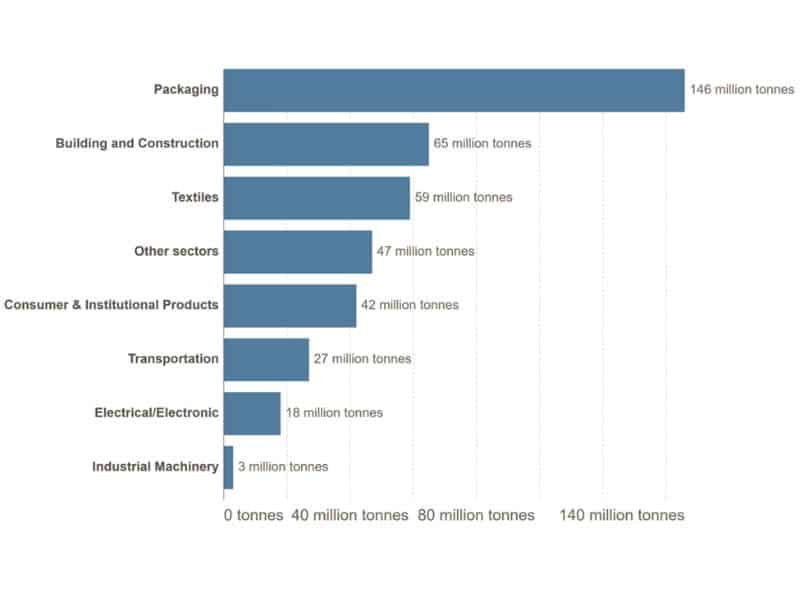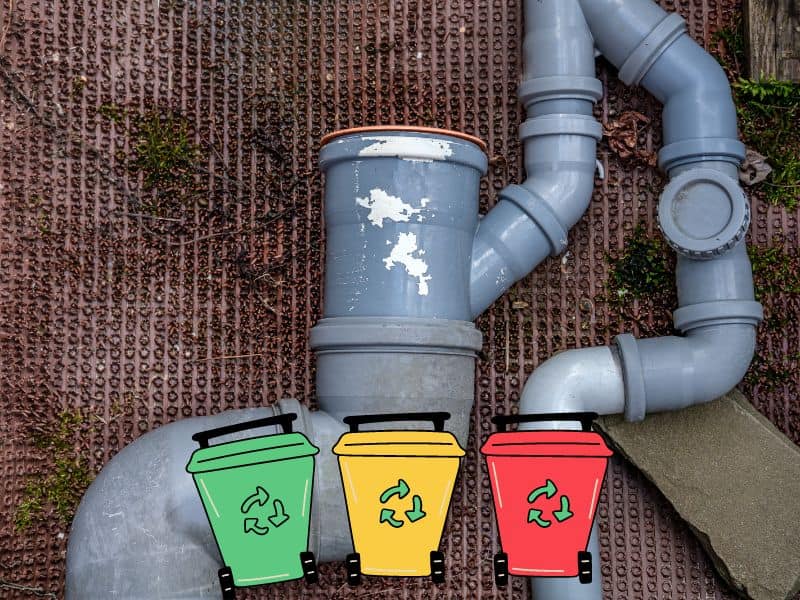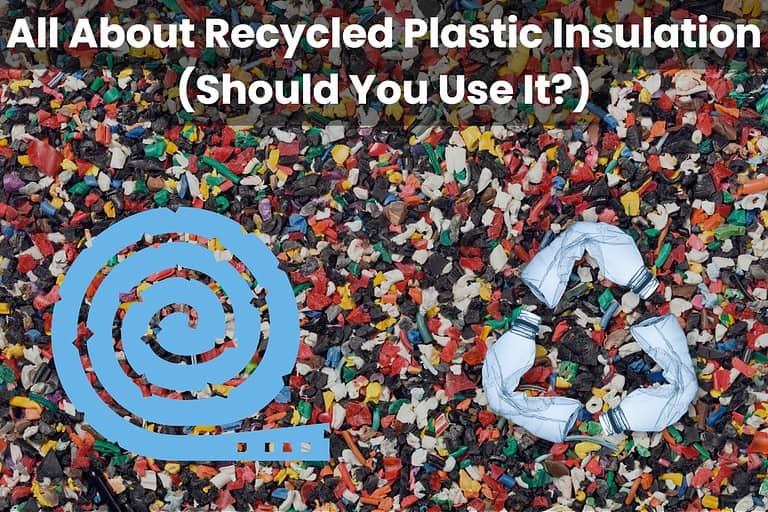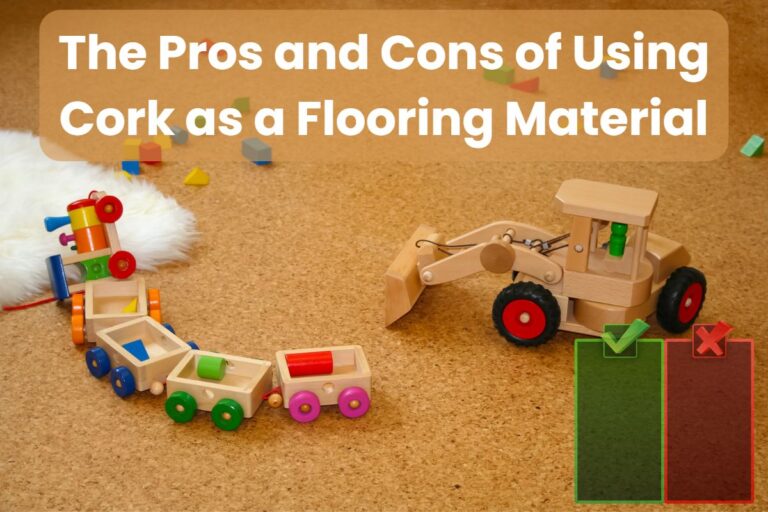Pros and Cons of Using Recycled Plastic for Buildings

Imagine walking into a room made out of recycled plastic. On one hand, you might feel a sense of awe since recycled plastic is a sustainable building material.
On the other hand, you might be skeptical about the safety of such a building.
The use of recycled plastic in buildings is on a steady rise as people become more knowledgeable about reducing plastic waste.
However, is it a sustainable construction material? What are the pros and cons of using recycled plastics in buildings?
In the rest of this article, I’ll discuss the pros and cons of using recycled plastic for buildings.
From this discussion, you’ll be able to decide if recycled plastic is the right material for your construction project.
So let’s get started!
Plastic Manufacturing and Recycling

The manufacture of plastics has been rising at an incredible rate since the middle of the last century. In the 1950s, the production of plastics stood at 2.3 million tons. However, this amount rose to 448 million tons by 2015.
Unfortunately, most plastics are not recycled at the end of their lifecycle. Instead, they find their way into oceans and landfills, polluting the environment.
The exponential increase in plastic manufacturing is fueled largely by its use in packaging.
According to the 2015 statistics, the packaging sector accounted for 146 million tons of plastic use. This means that this sector accounts for over 42% of plastic use.
Building and construction came second, accounting for 65 million tons or 19% of plastic usage.
The chart below shows plastic production and use by industry in 2015.

Chart 1: Plastic production and consumption in 2015. Source: Our World in Data
Although less than 10 percent of generated plastic has been recycled, the drive for sustainability has led to initiatives promoting responsible management and reuse of plastics. One such initiative is recycling and reusing these materials in building.
This responsible management of plastic helps to reduce its environmental impact significantly.
The above chart shows that the building and construction industry consumes a considerable amount of plastics. The high amount of plastic used in the construction industry means there are many recycling opportunities just waiting to be taken.
Some ways recycled plastic is used in buildings include:
- Insulation of walls and roofs
- External cladding on buildings
- Window sills and frames
- Flooring
- Modular roofing systems
- Utility pipes, conduits, and ducts
- Paving stones and blocks
- Bricks
- Reinforcing bars
- Sewage pipes and drainage systems
Pros and Cons of Using Recycled Plastic in Buildings
Let’s be realistic; there are pros and cons to using any building material.
Knowing the pros and cons of each plays an important role when choosing the material you want to build with. It helps you narrow down to the one that meets your needs.
So, let’s look at the pros and cons of using recycled plastic in buildings.
Pros of Using Recycled Plastic in Buildings
Cost-Effective

Using recycled plastic for construction is cheaper than traditional materials like wood, concrete, or steel.
Recycled plastic is something that has been used previously and discarded as waste. As such, the costs of production are much lower than traditional materials.
Moreover, recycling plastic uses less energy than producing virgin plastic. Therefore, it helps save money by lowering production energy.
Durability
Plastic is highly resistant to the elements–it can withstand rain and sun without deteriorating.
The durability of plastic makes it an ideal material for structures expected to last longer.
It’s also suitable for outdoor structures that are in constant contact with the elements. Thus, you don’t have to worry that your building will rot and have poor structural integrity.
Environmentally Friendly
The construction industry has been accused of being non-eco-friendly because it consumes 40% of forest timber and 16% of the world’s freshwater. Moreover, it generates pollution and greenhouse gasses.
Using recycled plastic makes buildings more environmentally friendly since it helps to reduce the amount of waste that goes into landfills. In addition, it helps to conserve natural resources by reducing the need for timber and other materials used in construction.
High Versatility
Recycled plastic is highly versatile; it can be used in different ways during construction.
Since it’s easy to mold plastic into different shapes and sizes, it’s a suitable material for many different building projects.
Also, recycled plastic is lightweight and easy to transport and install. This makes it ideal for both residential and commercial building projects.
Excellent Insulation

Insulation is a crucial factor for buildings. A house built with an insulating material is more energy-efficient and will be more comfortable.
Due to its poor thermal conductivity, recycled plastic has excellent insulation properties, making it a great choice for building projects. It can help reduce the heat that escapes through the walls, ceilings, and floors. This results in lower energy bills and enhanced comfort.
Cons of Using Recycled Plastic in Buildings
Sensitive to High Temperatures
Plastics have low chemical resistance at high temperatures.
When exposed to elevated temperatures, they undergo changes in their mechanical properties, dimensions, friction, and wear. As a result, they are unsuitable for use as structural elements and in hot water systems.
Difficult to Recycle
Plastics are made from different polymers, such as PP, PET, and PVC, making them difficult to sort and recycle.
Moreover, while some plastics cannot be recycled, others can only be recycled only once, after which they must be disposed of.
This makes it challenging to reuse plastic in construction projects as it requires more effort and expertise.
Low Modulus of Elasticity
The modulus of elasticity (Youngs’ Modulus) determines a material’s stiffness. The higher the modulus of elasticity, the stiffer the material and the better it is for load-bearing applications.
Plastics have a modulus of elasticity of approximately 2.7 GPa. This is a low value compared to other construction materials. For instance, steel has a modulus elasticity of about 200 GPa.
Due to its low modulus of elasticity, plastic is a weaker material and unsuitable for many load-bearing applications. As such, it can’t be used for elements like columns, beams, and floor joists.
Disposal Challenges

Once the building is no longer in use, disposing of plastic properly can be challenging.
Not all plastics are biodegradable, meaning they must be disposed of carefully and prevented from entering landfills or the environment. Otherwise, they can leach chemicals and degrade into microplastics, which pose a danger to the environment.
Final Thoughts On The Pros and Cons of Using Recycled Plastic for Buildings
Like anything else, there are benefits and drawbacks to using recycled plastics for buildings.
Plastic is not as strong as many more commonplace building materials, such as steel and concrete. However, it is very durable and lightweight, making it easy to transport and work with.
In the right use case, recycled plastic can be a great choice to improve the eco-friendliness of your construction project.
If you want to learn more about sustainable building materials, check out these 23 sustainable building materials.







